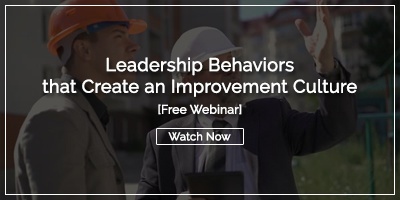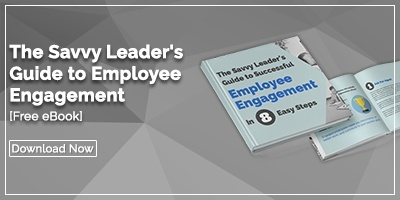You’ve identified inefficiencies. You have a clear roadmap. You know your improvement initiative can move the needle. What's next? You need executive buy-in.
One of the most common challenges for CI and OpEx leaders is getting senior leadership to engage, support, and actively champion improvement work. It's not that leaders don't care about the performance of CI and OpEx initiatives, but because of a combination of perception gaps, systemic challenges, and competing priorities. The good news? With the right framing and structure, it's absolutely possible to turn passive approval into active sponsorship.
Below, we break down how to earn executive buy-in that translates into cultural and operational impact.
Frame the Initiative in Executive Language
Executives don’t buy into Kaizen events, A3s, or value stream maps. Those are tools. Instead, they buy into outcomes that move the business forward. If your pitch focuses on activities instead of impact, you risk being deprioritized. To earn leadership support, you need to translate your initiative into metrics they care about like:
-
Revenue growth
-
Cost avoidance
-
Risk mitigation
-
Customer satisfaction
-
Time-to-value
For example: “We’re running a daily huddle pilot to improve frontline communication” becomes “This initiative will reduce production downtime by 7% and improve on-time delivery, which directly supports our margin goals for Q3.”
If you can’t tie the initiative to a strategic priority or financial impact, it won’t be a priority, no matter how brilliant the idea.
Quantify the Opportunity (or the Cost of Inaction)
Executives are used to making decisions with incomplete information, but that doesn't mean they'll act without knowing the stakes. While they don't expect perfect data, they do expect clarity on either the opportunity cost or the cost of inaction. Quantifying even directional impact in terms of dollars, time, or strategic risk is critical because vague benefits like "better communication" or "more efficient" won't hold up against competing priorities with clearer ROI.
Use this framing equation to articulate the opportunity cost:
-
Current state – What’s broken?
-
Future state – What’s possible?
-
Delta – What’s the impact in dollars, time, or strategic advantage?
If that’s not enough, flip the equation. Executives are often more motivated to avoid risk than to chase potential gain:
-
What happens if we don’t improve this?
Make It Easy for Executives to Engage
The best CI leaders engineer executive buy-in by building engagement into the structure of the initiative from the very beginning, treating leadership alignment as a critical input to success. That means selecting improvement opportunities that map clearly to executive priorities, framing proposals in business terms, and establishing routines where leaders are naturally exposed to the work. The goal is to make it easy for executives to engage meaningfully like seeing progress at a glance, taking ownership of outcomes, and championing the initiative without getting pulled into the weeds.
Show Proof of Concept Quickly
Buy-in is earned in phases, and the fastest way to build momentum is to demonstrate success early. Don’t try to secure a multi-year roadmap out of the gate. Instead, start small and strategically in a high-friction area that leadership cares about. Here are three steps you can take to show proof of concept quickly:
-
Choose a process, team, or department where you can move fast, measure impact, and create a tangible win.
-
Show momentum by capturing early engagement, surfacing frontline feedback, and tying results back to measurable outcomes.
-
Report results in executive terms like dollars saved, hours saved, cycle time reduced, or risk mitigated.
Tell Stories, Not Just Stats
Even the most data-driven executives are persuaded by narrative. While metrics are essential for credibility, stories provide the context, meaning, and urgency behind those numbers. That might mean sharing a frontline testimonial like, "Here's what our nurses said after the change...," or showing how cross-functional collaboration between IT, Ops, and QA led to a breakthrough that hadn't been possible in silos.
Improvement work is about people. Don’t strip the human element from your case.
Build Habit Loops for Executive Engagement
Executive engagement needs to be reinforced over time through consistent, visible behaviors. Just like frontline teams benefit from standard work, executives need simple, repeatable routines that embed CI into the way they lead. That's where habit loops come in.
To build your executives' habit loops, there are three key components:
1. Cue (Trigger) – A reminder or signal that initiates the behavior.
2. Routine (Action) – The desired activity you want the user to take.
3. Reward (Result) – A benefit or recognition that reinforces the behavior.
For example, an executive sees a calendar reminder (cue) to review CI dashboard (routine) and gains visibility into improvement progress (reward).
It's also important to keep in mind that the behaviors in an executive's routine have downstream effects. When executives show up in specific, repeatable ways, they send a clear message to the organization that continuous improvement is not optional. Here are some routines that create those ripple effects:
-
Join biweekly huddle reviews to show frontline teams that leadership is paying attention.
-
Recognize team improvement wins in all-hands calls to show CI is worth celebrating
Executives are under pressure to deliver results, manage conflicting demands, and minimize risk, and your improvement initiative should feel like a strategic asset, not an operational distraction. Speak in terms that resonate with their objectives, align your proposal with their priorities, and design opportunities for them to lead effectively.




Add a Comment